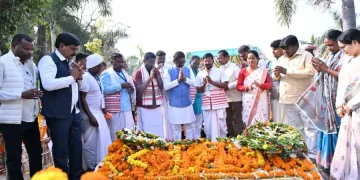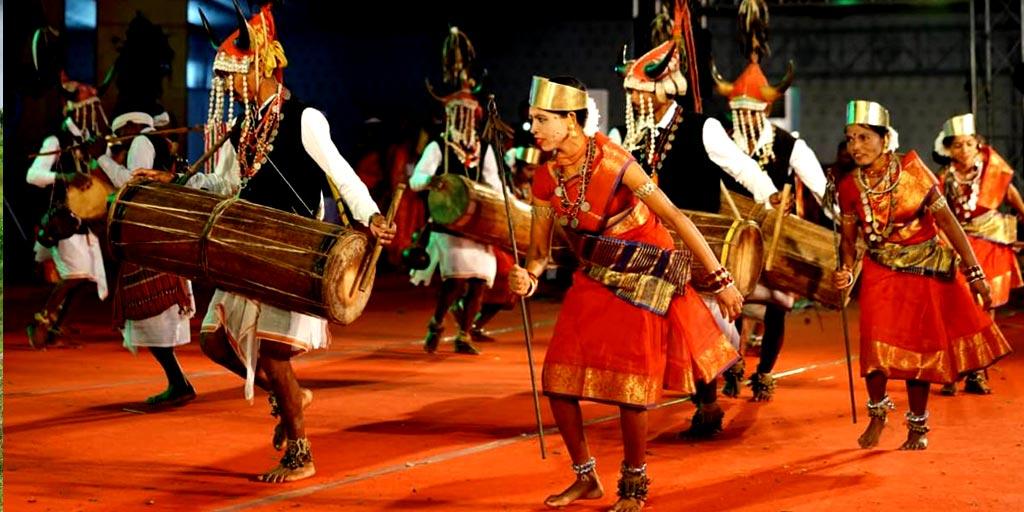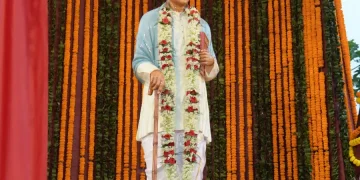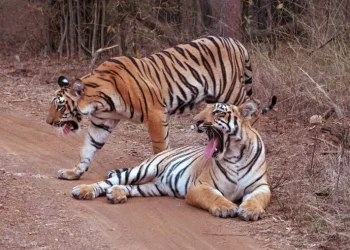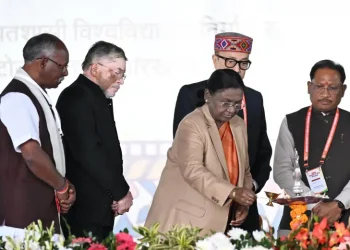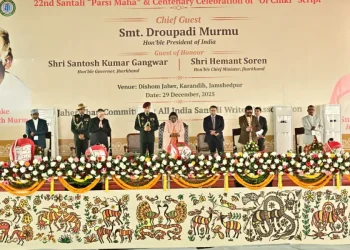Anup Ranjan Pandey was awarded the Padma Shri in 2019 for his unique contribution to tribal society. Pandey is the founder-coordinator of the now-famous Bastar Band, a group of tribals from the area showcasing traditional music, dance and drama.
The band has even gained recognition abroad and won accolades for its unique sound as well as visual performance effects.
Pandey hopes to preserve hundreds of unique instruments and indigenous art forms of the tribals by bringing them to the mainstream and seeking patronage from the government.
He stresses the Bastar Band’s ties with their land, saying, “There’s no modification to these folk art forms. The originality has been maintained.(It’s important to remember that) these dying arts are struggling to survive in the modern world.”
On Stage
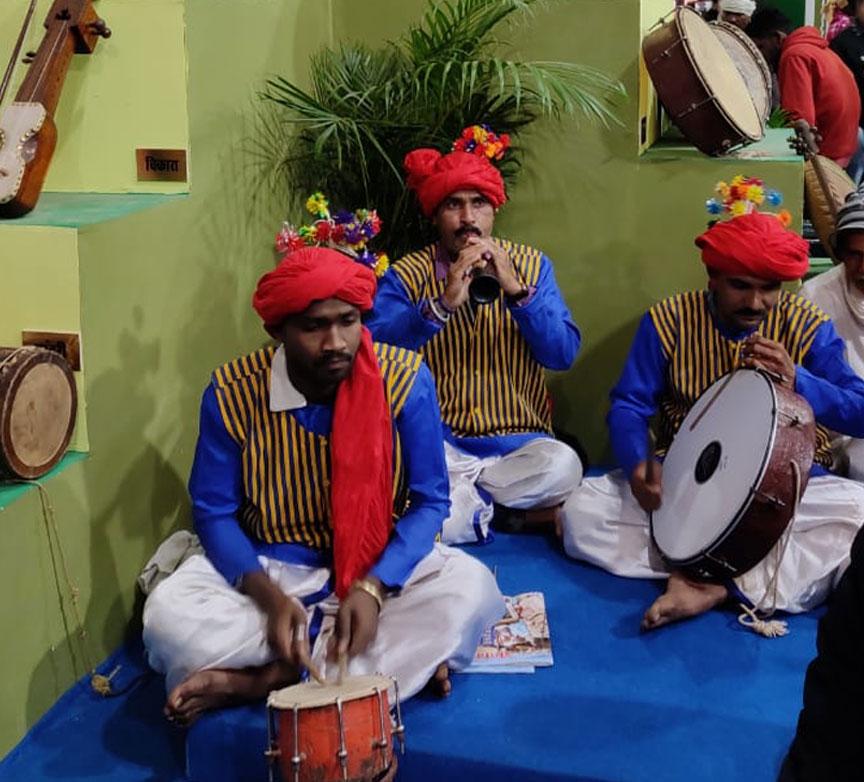
Small groups perform at a time in colorful traditional attire and headdresses, presenting seven to eight folk songs in different dialects over an hour
Bastar Band performs songs and dance-dramas hailing the weather gods, welcoming seasons, celebrating the harvest and other ceremonial and ritualistic montages.
It’s akin to an abridged introduction to the musical spectrum of Bastar. The troupe of more than 40 members consists of representatives from almost all the tribes of the region – Muria, Madia, Gond and many others – and the variety they produce on stage is to be seen to be believed.
Small groups perform at a time, wearing colourful traditional attire, complete with elaborate headdresses. An hour’s recital would present perhaps seven to eight folk songs in different dialects, depicting talent. That has been passed down from one generation. A single song could comprise five discrete tunes on separate instruments and the dances have intricate footwork.
Many Tribes, Many Arts
The Indian Tribal has its typical musical traditions and dance forms, stemming from their distinct social histories and religious customs.
Pandey says, “The Gaur, Kaksaar, Hulki Mandri, Parab, Dhurva, Gedi and Bison Horn Madia dances are much appreciated by the audiences. They are hugely popular because they are so unique.”
“As many as 75 folk instruments are also used by The Indian Tribal. During the programmes, including strings, trumpets and drums,” the Padma Shri awardee adds. As an example, he describes a rare bamboo instrument that makes a certain sound when swished through the air.
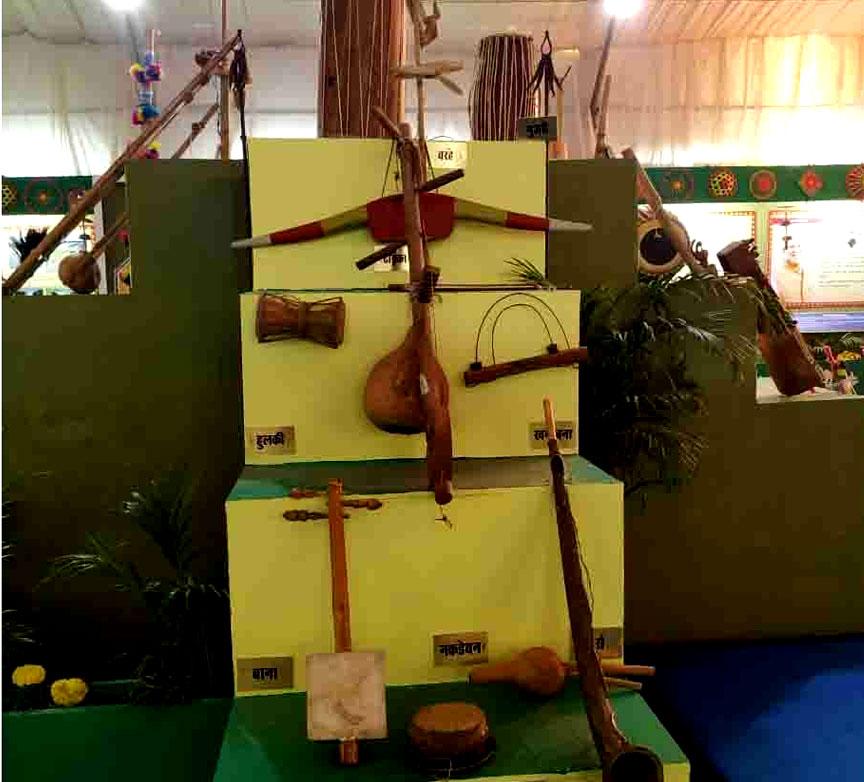
Popular tribal percussion instruments are Gata Paray, Nar Paray, Pen Dhol, Mandaar Dhol, Pendul Dhol, Hulki Mandari and Ojha Paray.
Some resemble the tabla and nagara, being a pair of twin hand drums. These include Kundid, Nisan, Goti Baaja, Munda Baaja and Mirdin (Mridang).
The Mohri, Dev Mohri, Sulud, Algoja, Bean, Kunk and Baans are some of the unique air instruments. According to Pandey, string instruments are the Sarangi, Kikid, Dhusir, and Rambaja.
Pandey points out that many of these instruments are not even familiar to the Indian tribal youth of Bastar. And are only recognised by the older generation. He says the Bastar Band aims to stop these arts from dying out totally while naming some of the members.
“The prominent folk artistes are Budhram Sodhi, Dulgo Sodhi, Rangbati Baghel, Kachri Salam, Ayata Nag, Jamuna Nag, Navel Korram, Sonmati Nag, Sulmati Potai, Jaymati Dugga, Ramsingh Salam, Jugdhar Korram, Pankuram Sodhi, Manku Netam, Misruram Baghel, Sukaluram, Khursi Korram, Vikram Yadav and Chhannu Tati,” he lists.
With its one-of-a-kind repertoire and array of costumes, Bastar Band has produced some scintillating programmes, wowing audiences wherever it has gone. Having won considerable appreciation, Pandey now only hopes this will keep the traditions alive.

